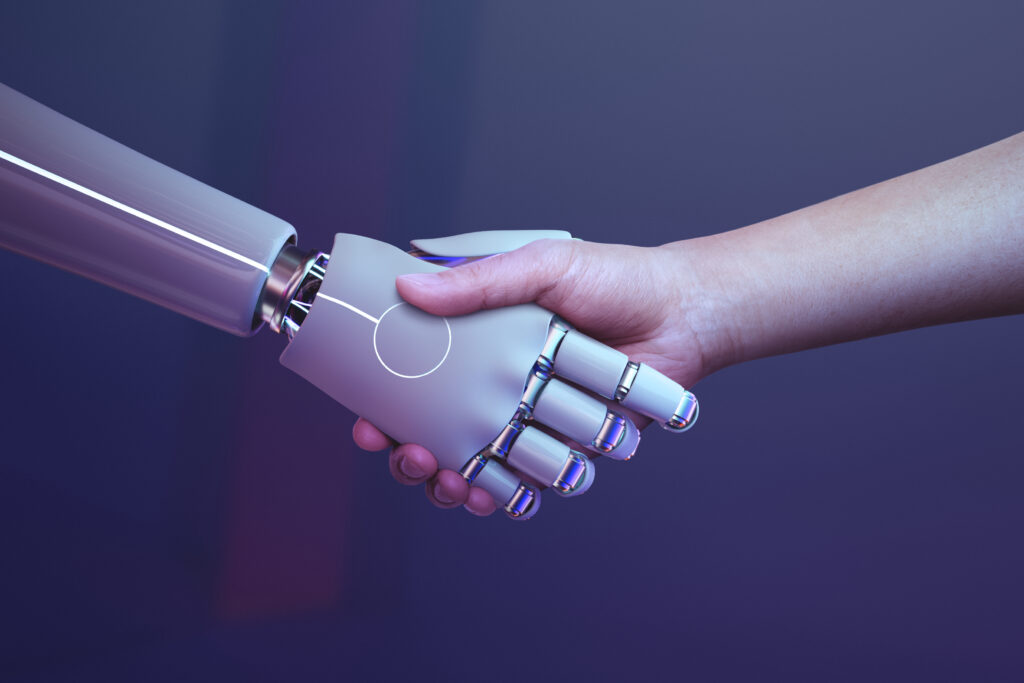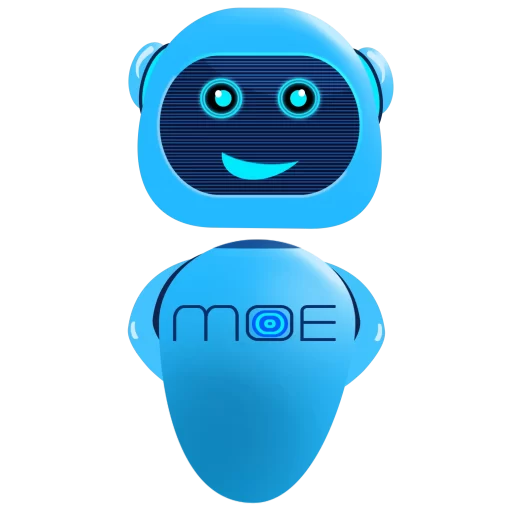The Value of Chatbots: How They Can Improve Business Operations
Introduction
In today’s fast-paced digital era, businesses are constantly seeking ways to enhance their operations and improve customer satisfaction. One tool that has gained significant popularity is chatbots. Chatbots are computer programs designed to interact with users in a conversational manner. They have become an integral part of various industries, revolutionizing the way businesses operate and transforming customer experiences. This article explores the value of chatbots and how they can effectively improve business operations.

Table of Contents
1. What are chatbots?
2. The evolution of chatbots
3. Understanding the benefits of chatbots
- Enhanced customer service
- 24/7 availability
- Increased efficiency and productivity
- Personalized customer experiences
- Cost-effective solution
4. Implementing chatbots in business operations
- Identify business objectives
- Choose the right chatbot platform
- Design conversational flows
- Train and refine the chatbot
- Integrate with existing systems
- Monitor and improve performance
5. Chatbots and customer service
- Streamlining customer support
- Automated responses and quick resolutions
- Multilingual support
- Handling high-volume inquiries
- Seamless escalation to human agents
6. Chatbots and sales/marketing
- Lead generation and qualification
- Personalized recommendations
- Interactive product catalogs
- Automated follow-ups
- Customer feedback and surveys
7. Chatbots and internal operations
- Employee onboarding and training
- HR assistance and FAQs
- Workflow automation
- Task management and reminders
- Data collection and analytics
8. Overcoming challenges and limitations
- Natural language processing
- Context understanding
- Maintaining user engagement
- Handling complex inquiries
- Ensuring data privacy and security
9. Future trends in chatbot technology
- Voice-enabled chatbots
- Integration with other AI technologies
- Emotional intelligence in chatbots
- Enhanced personalization
- Augmented human-chatbot interactions
10. Conclusion
11. FAQs (Frequently Asked Questions)
12. Are chatbots only beneficial for large businesses?
13. Can chatbots replace human customer service agents entirely?
14. How can chatbots be customized to fit specific business needs?
15. Do chatbots require constant monitoring and updates?
16. Is there a risk of chatbots malfunctioning or providing inaccurate information?
What are chatbots?
Chatbots are computer programs designed to simulate conversations with human users. They utilize artificial intelligence (AI) and natural language processing (NLP) techniques to understand and respond to user queries. These programs can be integrated into various platforms, such as websites, messaging apps, or voice assistants, to provide automated assistance and engage in real-time conversations with users.
The evolution of chatbots
Understanding the benefits of chatbots
The concept of chatbots dates back to the mid-20th century, with the introduction of the Turing test by Alan Turing. However, it was not until recent advancements in AI and NLP technologies that chatbots truly started to evolve. Early chatbots relied on rule-based systems, where predefined responses were triggered based on keyword matching. But with the rise of machine learning and deep learning algorithms, chatbots became more sophisticated, capable of understanding context, and providing more accurate and personalized responses.
Enhanced customer service
Chatbots have revolutionized customer service by providing instant and efficient support to users. They can handle multiple customer inquiries simultaneously, eliminating wait times and providing timely responses. Chatbots are equipped with vast databases of information, enabling them to answer frequently asked questions and provide relevant solutions to common issues.
24/7 availability
Unlike human agents, chatbots can operate 24/7 without the need for breaks or vacations. This round-the-clock availability ensures that customers can receive assistance at any time, regardless of their geographic location or time zone. This accessibility enhances customer satisfaction and eliminates the frustration of delayed responses.
Increased efficiency and productivity
Integrating chatbots into business operations streamlines processes and improves overall efficiency. By automating repetitive tasks and handling routine inquiries, chatbots free up human agents to focus on more complex and high-value tasks. This increased productivity leads to cost savings and improved operational effectiveness.
Personalized customer experiences
Chatbots can collect and analyze user data to personalize interactions and provide tailored recommendations. By understanding user preferences and purchase history, chatbots can offer relevant product suggestions, promotions, and discounts. This level of personalization enhances customer engagement and drives conversions.
Cost-effective solution
Implementing chatbots can significantly reduce operational costs for businesses. Instead of hiring and training a large customer support team, organizations can rely on chatbots to handle a significant portion of customer inquiries. Chatbots are scalable, allowing businesses to accommodate a growing customer base without incurring additional staffing costs.
Implementing chatbots in business operations
To effectively implement chatbots in business operations, it is essential to follow a strategic approach. The following steps outline the process of integrating chatbots into an organization:
1. Identify business objectives
Before deploying chatbots, businesses should identify their specific objectives and use cases. Whether it’s improving customer service, enhancing sales and marketing efforts, or streamlining internal operations, defining clear goals will help determine the functionality and features required for the chatbot.
2. Choose the right chatbot platform
There are various chatbot development platforms available, each offering different capabilities and integrations. Businesses should evaluate these platforms based on their requirements and select the one that aligns with their goals. Factors to consider include ease of use, scalability, natural language processing capabilities, and integration options with existing systems.
3. Design conversational flows
Designing effective conversational flows is crucial for creating a seamless user experience. It involves mapping out the different user interactions and determining the appropriate responses for each scenario. User input should be captured and processed accurately to provide relevant and meaningful replies.
4. Train and refine the chatbot
During the initial stages, the chatbot may require training to understand user queries better. By analyzing user interactions and feedback, businesses can identify areas for improvement and refine the chatbot’s responses. Continuous monitoring and optimization are necessary to ensure the chatbot delivers accurate and valuable information.
5. Integrate with existing systems
5. Integrate with existing systems
To maximize the chatbot’s impact, integration with existing systems is essential. Whether it’s CRM (Customer Relationship Management) software, e-commerce platforms, or internal databases, connecting the chatbot with relevant systems enables seamless data exchange and enhances the chatbot’s capabilities.
6. Monitor and improve performance
Once deployed, ongoing monitoring and performance evaluation are crucial. Analyzing user feedback, tracking key performance indicators, and leveraging analytics help identify areas of improvement. Regular updates and optimizations ensure that the chatbot remains effective and aligned with evolving business needs.
Chatbots and customer service
One of the primary areas where chatbots excel is customer service. Here are some ways chatbots improve customer support:
Streamlining customer support
Chatbots provide immediate responses to customer inquiries, eliminating the need to wait for a human agent’s availability. Users can receive assistance promptly, resulting in a more positive customer experience.

Automated responses and quick resolutions
Chatbots can handle a wide range of frequently asked questions and common issues without human intervention. By providing automated responses, chatbots save time for both customers and support agents. Simple queries can be resolved instantly, reducing the workload on human agents.
Multilingual support
For businesses operating globally, language barriers can pose a challenge. However, chatbots equipped with multilingual capabilities can overcome this obstacle. They can communicate with customers in their preferred language, offering support and information regardless of geographical boundaries.
Handling high-volume inquiries
During peak periods or promotional campaigns, businesses often experience a surge in customer inquiries. Chatbots excel in handling high volumes of inquiries simultaneously, ensuring that each user receives timely assistance and reducing the risk of customer dissatisfaction due to long wait times.
Seamless escalation to human agents
While chatbots can handle most routine inquiries, there are instances where human intervention becomes necessary. Chatbots can seamlessly escalate conversations to human agents when a query exceeds their capabilities. This transition ensures a smooth handover, with all relevant information already collected by the chatbot.
Chatbots and sales/marketing
Chatbots play a significant role in improving sales and marketing efforts. Here are some ways they contribute to these areas:
Lead generation and qualification
Chatbots can engage with potential customers, gather their information, and qualify leads. By asking relevant questions and analyzing responses, chatbots can identify high-potential leads and pass them on to the sales team for further nurturing and conversion.
Personalized recommendations
Understanding user preferences and browsing history, chatbots can provide personalized product recommendations. By suggesting relevant items and promotions, chatbots enhance the user experience and increase the likelihood of conversion.
Interactive product catalogs
Rather than browsing through extensive product catalogs, users can interact with chatbots to discover products or services that meet their requirements. Chatbots can showcase product features, provide pricing information, and even facilitate purchases within the conversation.
Automated follow-ups
Chatbots can send automated follow-up messages to prospects or customers, ensuring they stay engaged and informed. Whether it’s notifying about new product releases, upcoming promotions, or abandoned shopping carts, chatbots can nurture leads and drive conversions.
Customer feedback and surveys
Chatbots can collect valuable customer feedback and conduct surveys to gather insights. By engaging users in interactive conversations, chatbots can obtain feedback on product experiences, customer satisfaction, and areas for improvement. This data can be used to enhance products and services and refine marketing strategies.
Chatbots and internal operations
Chatbots are not limited to external customer interactions; they can also streamline internal operations. Here’s how chatbots contribute to internal processes:
Employee onboarding and training
Chatbots can assist in employee onboarding by providing essential information, training materials, and answering frequently asked questions. This automated guidance reduces the workload on HR personnel and ensures a consistent onboarding experience for new hires.
HR assistance and FAQs
HR departments often receive a multitude of inquiries related to policies, benefits, and procedures. Chatbots can handle these routine queries, providing instant responses and relieving HR personnel from repetitive tasks. This enables HR professionals to focus on more strategic and value-added activities.
Workflow automation
Chatbots can automate various workflows, such as leave requests, expense approvals, or IT support ticketing. By integrating with relevant systems, chatbots can initiate and track processes, ensuring efficient task management and reducing administrative overhead.
Task management and reminders
Chatbots can act as personal assistants, helping employees manage their tasks, deadlines, and schedules. By sending reminders and notifications, chatbots ensure that important assignments are not overlooked and that employees stay organized and productive.
Data collection and analytics
Chatbots can collect valuable data during interactions with employees. This data can be used to analyze employee sentiment, identify training needs, or gain insights into common challenges. The analysis helps businesses make informed decisions and improve internal processes.
Overcoming challenges and limitations
While chatbots offer significant benefits, they also come with challenges and limitations.
Here are some key considerations:
Natural language processing
Chatbots heavily rely on natural language processing to understand user queries and provide accurate responses. However, interpreting and contextualizing human language can be complex, and chatbots may struggle with understanding certain accents, slang, or complex sentence structures. Ongoing advancements in NLP aim to overcome these challenges.
Context understanding
Understanding the context of a conversation is essential for chatbots to provide meaningful responses. However, chatbots may struggle with maintaining context over extended interactions or when users switch topics abruptly. Improving context understanding capabilities is an ongoing area of research.
Maintaining user engagement
To deliver a positive user experience, chatbots need to engage users effectively. They should be programmed to use conversational language, ask relevant questions, and provide interactive responses. Maintaining user engagement requires continuous optimization and refinement.
Handling complex inquiries
While chatbots excel at handling routine and common inquiries, they may struggle with complex or unique scenarios. In such cases, chatbots should be designed to seamlessly escalate the conversation to human agents who can provide specialized assistance. Striking the right balance between automation and human involvement is crucial.
Ensuring data privacy and security
Chatbots collect and process user data, making data privacy and security paramount. Businesses must implement robust security measures to protect user information and comply with data protection regulations. Transparent privacy policies and secure data storage are essential components of a trustworthy chatbot system.
Future trends in chatbot technologyThe evolution of chatbot technology continues to drive innovation and opens up new possibilities. Here are some future trends to watch:
Voice-enabled chatbots
Voice assistants like Amazon Alexa and Google Assistant have gained popularity. Integrating chatbot capabilities with voice-enabled devices allows users to interact with chatbots using voice commands, further enhancing user convenience.
Integration with other AI technologies
Chatbots can be integrated with other AI technologies like machine learning, sentiment analysis, and image recognition. This integration enables chatbots to provide more accurate responses, understand user emotions, and interpret visual information.
Emotional intelligence in chatbots
Advancements in AI enable chatbots to understand and respond to user emotions. By analyzing tone, sentiment, and context, chatbots can provide empathetic and emotionally intelligent interactions, enhancing user satisfaction.
Enhanced personalization
Chatbots will continue to improve personalization by leveraging user data and preferences. By integrating with customer databases and utilizing advanced algorithms, chatbots can deliver highly personalized recommendations, offers, and experiences.
Augmented human-chatbot interactions
Rather than replacing human agents, chatbots will increasingly work in collaboration with them. Augmented intelligence models, where humans and chatbots complement each other’s strengths, will become more prevalent, providing users with the best of both worlds.
Conclusion
Chatbots have proven to be invaluable tools in improving business operations across various industries. They enhance customer service, increase efficiency, and provide personalized experiences. By automating routine tasks and handling inquiries, chatbots free up human resources to focus on more complex and strategic activities. While there are challenges to overcome, the future of chatbot technology looks promising, with advancements in NLP, personalization, and integration with other AI technologies. Embracing chatbots can drive business growth and deliver exceptional customer experiences.
FAQs (Frequently Asked Questions)
1. Are chatbots replacing human customer support agents?
No, chatbots are not meant to replace human agents. Instead, they work alongside them, handling routine inquiries and automating repetitive tasks. Human agents can then focus on more complex and specialized customer needs.
2. Can chatbots understand different languages?
Yes, chatbots can be programmed to understand and respond in multiple languages. They use natural language processing algorithms to interpret user input and provide appropriate responses.
3. How secure is the data shared with chatbots?
Data security is a critical aspect of chatbot implementation. Businesses should ensure
that proper security measures, such as encryption and secure storage, are in place to
protect user data. Transparent privacy policies should also be communicated to users.
- What happens when a chatbot cannot handle a customer inquiry?
If a chatbot cannot handle a customer inquiry, it should be designed to seamlessly escalate the conversation to a human agent. This ensures that users receive the assistance they need from the right resource.
5. How can chatbots improve employee productivity?
Chatbots can improve employee productivity by automating tasks, providing information and guidance, and assisting with workflow management. They act as virtual assistants, helping employees stay organized and focused on high-value activities.

